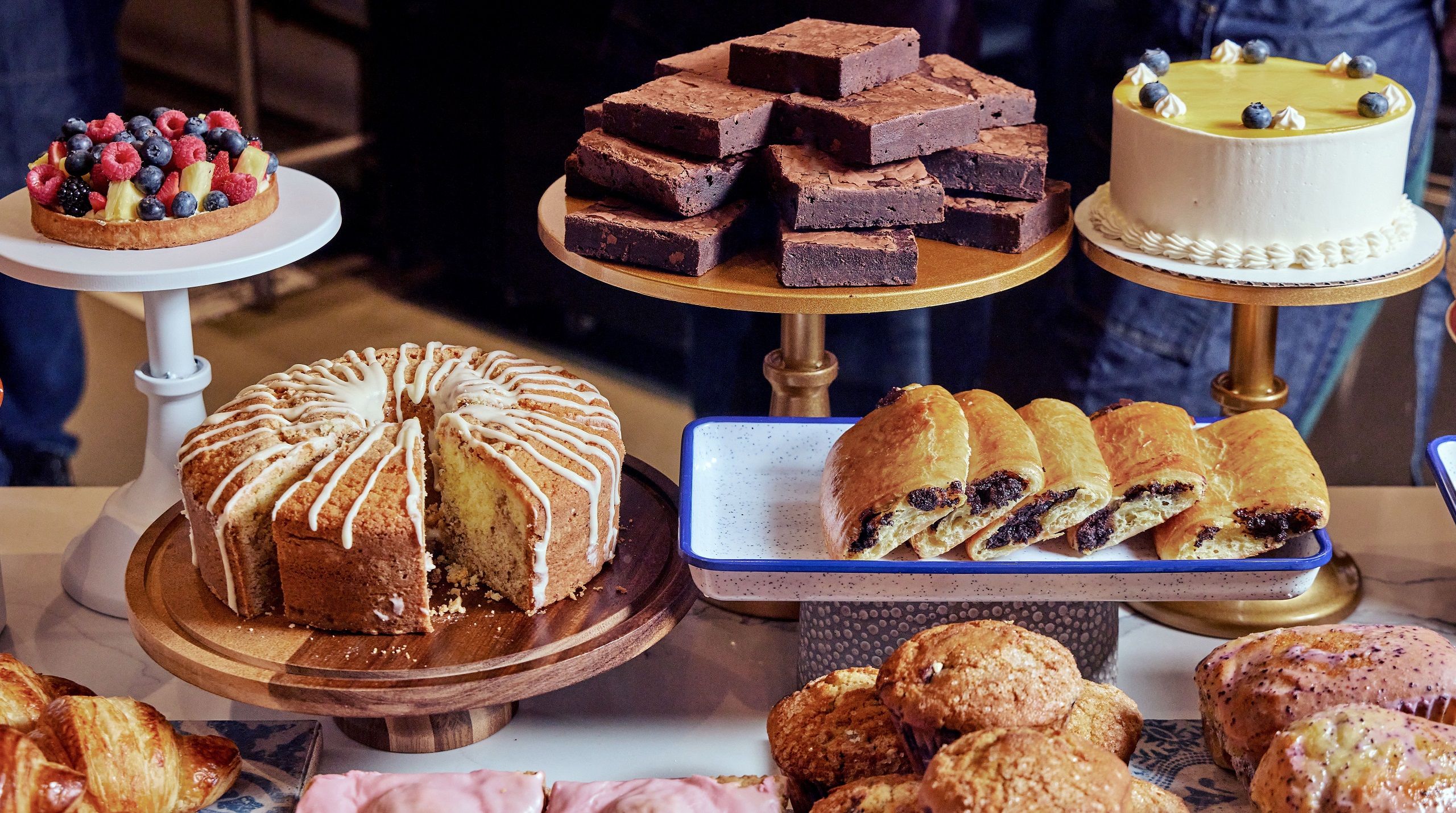Recognizing the Art of Pastry Shop Products: From Fresh Baked Breads to Tempting Pastries and Finger Foods
From the scientific research behind the ideal loaf of bread, where fermentation and gluten development play critical duties, to the skill required for creating layered breads, each element exposes a compelling story of craftsmanship. The flexibility of finger foods illustrates how taste and appearance can be skillfully incorporated to engage diverse preference choices.
The Science of Bread Making
At the heart of every loaf of bread lies a fascinating interplay of chemistry and biology. The process of bread making begins with the mix of flour, salt, yeast, and water-- each component playing a critical duty in the end product. Flour consists of proteins, mostly glutenin and gliadin, which, when blended with water, type gluten (Birthday Party Maddington). This flexible network is essential for capturing gases produced throughout fermentation.
Yeast, a living microorganism, ferments the sugars present in the flour, creating co2 and alcohol in the procedure. The carbon dioxide gas develops bubbles in the dough, triggering it to rise and establish a light texture. The temperature level and moisture during fermentation significantly affect yeast activity and, as a result, the bread's flavor and structure.

Learning Pastry Techniques
Just how can one attain the delicate equilibrium of structure and flavor that specifies extraordinary bread? Mastering bread techniques calls for a deep understanding of ingredients, methods, and the scientific research behind them. Basic to this craft is the option of top quality ingredients-- flour, butter, sugar, and eggs-- each playing an essential role in the final item's taste and structure.
The method of lamination, which includes folding layers of dough and butter, develops the preferred flakiness in pastries like croissants and smoke bread. Precision in temperature is essential, as butter must continue to be chilly to ensure optimal layers. In a similar way, appropriate blending techniques, such as the creaming method for cakes, guarantee also consolidation of air and fat, leading to a light and airy crumb.
Furthermore, preserving the best humidity degrees during cooking can substantially impact the result, ensuring that breads increase appropriately and accomplish that golden-brown coating. The art of bread also requires patience and method; each attempt improves one's skill and understanding of the intricate equilibrium called for to develop tempting pastries that delight the detects. Mastery in these methods ultimately distinguishes a knowledgeable pastry chef from an amateur.
Kinds Of Finger Foods
The globe of culinary thrills prolongs past breads to incorporate a wide variety of finger foods, which are commemorated for their convenience and versatility. These bite-sized treats are perfect for social events, providing a range of tastes and structures that deal with varied palates.

On the sweeter side, small tarts and bite-sized cupcakes offer a fascinating coating to any kind of meal, attracting those with a craving for sweets. Furthermore, cheese and charcuterie boards act as an innovative choice, allowing visitors to personalize their attacks with a variety of meats, cheeses, nuts, and fruits.
Taste Profiles in Cooking
Cooking is a detailed dance of taste accounts that integrates wonderful, tasty, and umami notes to develop an unified experience for the taste. Recognizing these profiles is essential for bakers seeking to boost their creations.
Active ingredients such as delicious chocolate and sugar introduce intricate pleasant notes that can either control or match various other flavors. Ingredients like flavors, natural herbs, and cheeses can transform a simple dough into a diverse taste experience.
Umami, frequently ignored in baking, plays a considerable role in enriching tastes. Components such as aged cheeses, fermented products, or perhaps specific nuts add to a tasty deepness that boosts total preference.
In addition, the interplay of acidity from active ingredients like buttermilk or citrus passion can lighten up tastes, using a refreshing counterpoint to sweetness. By attentively integrating these taste accounts, bakers can craft products that reverberate with diverse palates, developing a remarkable cooking experience. Eventually, mastering taste profiles is crucial to advancement worldwide of cooking.
Essential Baking Tools and Active Ingredients
Understanding flavor accounts in baking collections the stage for picking the right devices and components that promote the development of phenomenal baked goods. A trusted set of baking frying pans-- such as sheet frying pans, loaf frying pans, and cake frying pans-- is crucial for attaining desired forms and textures.
Flour serves as the foundation of the majority of dishes; selecting the appropriate kind-- be it bread, all-purpose, or bread flour-- can substantially impact the outcome. Baking powder and baking soda are necessary for producing lift in breads and cakes.
Furthermore, including taste enhancers like vanilla remove, seasonings, and citrus passion can raise your developments. By ensuring access to these basic devices and ingredients, bakers can with confidence begin on their culinary journey, crafting a Web Site varied variety of wonderful baked items.
Final Thought
In verdict, the art of pastry shop items incorporates an extensive understanding of both innovative techniques and clinical concepts. Proficiency in bread production, pastry prep work, and finger food discussion discloses his comment is here the intricate partnerships in between ingredients and procedures. Additionally, checking out diverse flavor accounts enriches the baking experience, while essential tools and ingredients provide the structure for success. Inevitably, the captivating globe of cooking thrives on the harmonious interplay of science and creativity, leading to a myriad of fascinating culinary developments.
Just how can one achieve the fragile balance of appearance and flavor that defines remarkable bread? Fundamental to this craft is the selection of top notch active ingredients-- flour, butter, sugar, and eggs-- each playing a vital duty in the final item's flavor and structure.

Understanding taste accounts in baking sets the stage for choosing the right tools and ingredients that facilitate the creation of remarkable baked products. Checking out varied taste profiles enriches the baking experience, while necessary tools and active ingredients provide the structure for success.